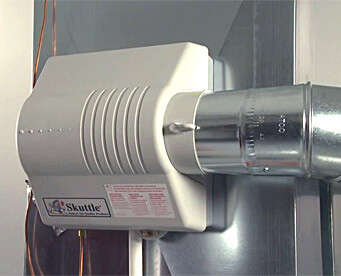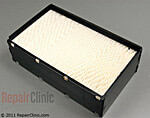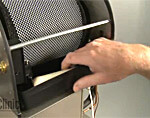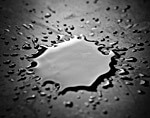
- 1-877-650-2121
- My Orders
- Cart 0 item(s)


Humidifiers efficiently maintain the proper humidity level in your home by adding moisture to the air. Reservoir and flow-through are the two most common types of whole-house humidifiers. They are mounted either to the furnace or the air handler. Free-standing portable or console-style humidifiers are designed to serve one or more rooms, depending on their size.
Furnace or air handler-mounted humidifiers
Safety first: Before performing any kind of maintenance or repair to your humidifier, turn off the water to the humidifier and turn off power to the furnace or air handler.

Annually, replace the humidifier pad, filter or element. Once scale and mineral deposits build up, it's usually impossible to clean them properly. It's best to replace. Enter your humidifier's model number to find the pad, filter or element for your model.

Scale, rust and hard water deposits will accumulate inside of your humidifier and diminish the amount of moisture the humidifier can put into the air. Follow your humidifier owner's manual for disassembly and cleaning instructions.

If your humidifier is leaking water on the ground, turn off the water supply until the reason for the leak is discovered and corrected.
For furnace-mounted reservoir-style humidifiers:
For portable or console-style humidifiers:
Humidifiers regulate humidity levels through evaporation. Humidifiers release their stored or flowing water into an air stream where the moisture is evaporated. Humidifiers mounted on the warmer side of a heating system will evaporate more water into the air than other units.
It depends. Generally, the colder the weather outside, the more humidity you need inside. That's because colder air tends to be drier air and, as the outside temperature drops, the moisture is drawn out of the house. To gauge the humidity level in your home, use an accurate hygrometer. Most people find that humidity levels between 30 and 40 percent are comfortable during the heating season.
Furnace-mounted humidifiers create moisture to increase humidity when the furnace blower is on. They are connected to a water supply and don't need to be refilled. They also require very little maintenance. However, they use more water than the reservoir style.
Reservoir-style units are also connected to a water supply, but because they store water they are more vulnerable to bacteria growth than flow-through units. However, bacteria growth can be curbed with an anti-bacterial treatment. If you need increased humidity in only one area of the house, we recommend that you supplement the humidity in that area using a free-standing portable or console style humidifier.
In cold climates, humidifiers are only necessary to increase humidity levels in the winter season. The humidity levels will increase as temperatures rise with the new season. At that time, the humidifier is no longer necessary. In warmer, dry climates it may be necessary to run a humidifier more frequently. You can use a hygrometer to monitor changes in humidity levels. At the end of the heating season, you may need to close the humidifier damper on furnace-mounted units until it is needed again. Check your owner's manual for more information.
You can use a hygrometer to monitor changes in humidity levels. If the relative humidity is below 25 and it doesn't increase over time you should check the humidifier to be sure it's working properly.